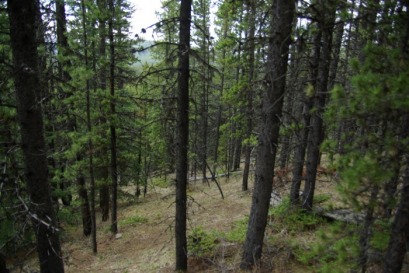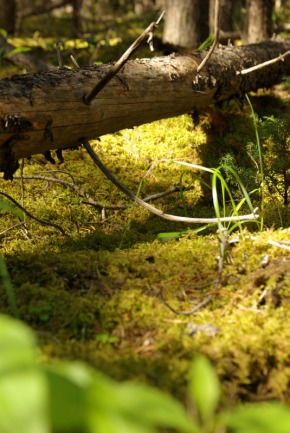Did adaptive growth change tree sway patterns 10 years after thinning?

This study is a re-examination of tree sway patterns resulting from changes in tree growth which may have occurred in the ten year period since a thinning treatment. The previous experiment, established in 1999 on an even-aged Lodgepole Pine (Pinus contorta var. latifolia) stand, was designed to study how tree sway patterns and associated crown collisions contributed to declines in leaf area often occurring in maturing pine stands. Published in 2003, the original study was a first to show linkages between bole slenderness and leaf area losses through crown abrasion during high wind events. In the previous study, sway patterns were found to have changed in both shape and intensity initially following the thinning treatment (Rudnicki et al. 2003).

Now ten years later, this study sets out to evaluate the affects adaptive growth has on tree sway and crown collisions patterns. Knowledge obtained from this study may be applied to current industry practices around thinning frequency or intensity. As crown interactions have been shown to intensify through thinning, increased understanding of the timeline in which growth reductions can be attributed to crown abrasion may help decision makers plan and schedule intensive stand management treatments, mitigating crown interactions.
Current results show significant changes between past and present sway displacements in low wind conditions with the greatest changes occurring in the largest trees. Growth after thinning ranged from nine to twenty-one percent in diameter at breast height (DBH) and seven to nineteen percent in height (HT). Bole slenderness predominantly decreased in all but three trees, ranging from a decrease ten to an increase of twelve percent.
Disclaimer: this is a class exercise based on modified or randomly generated datasets
